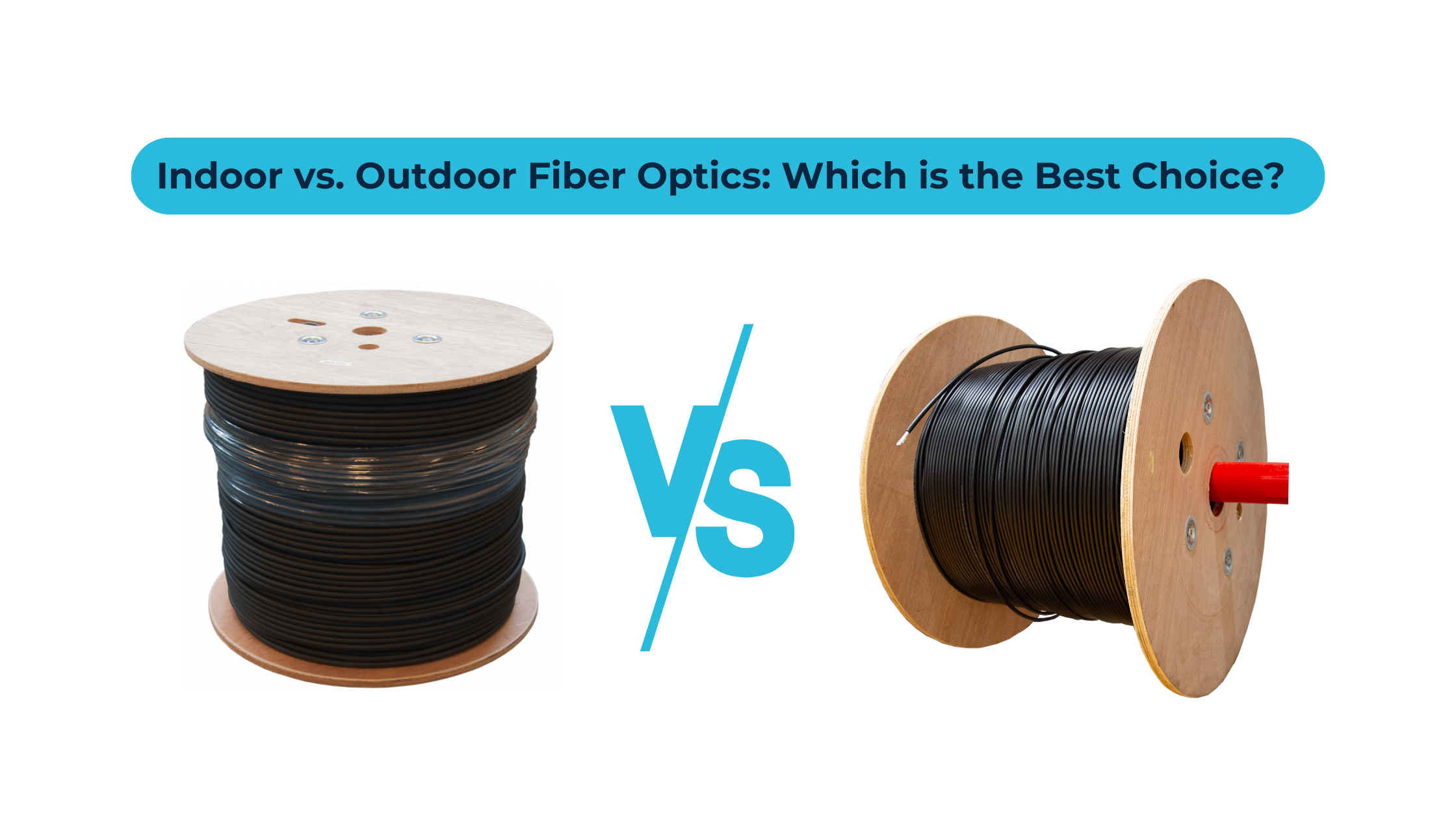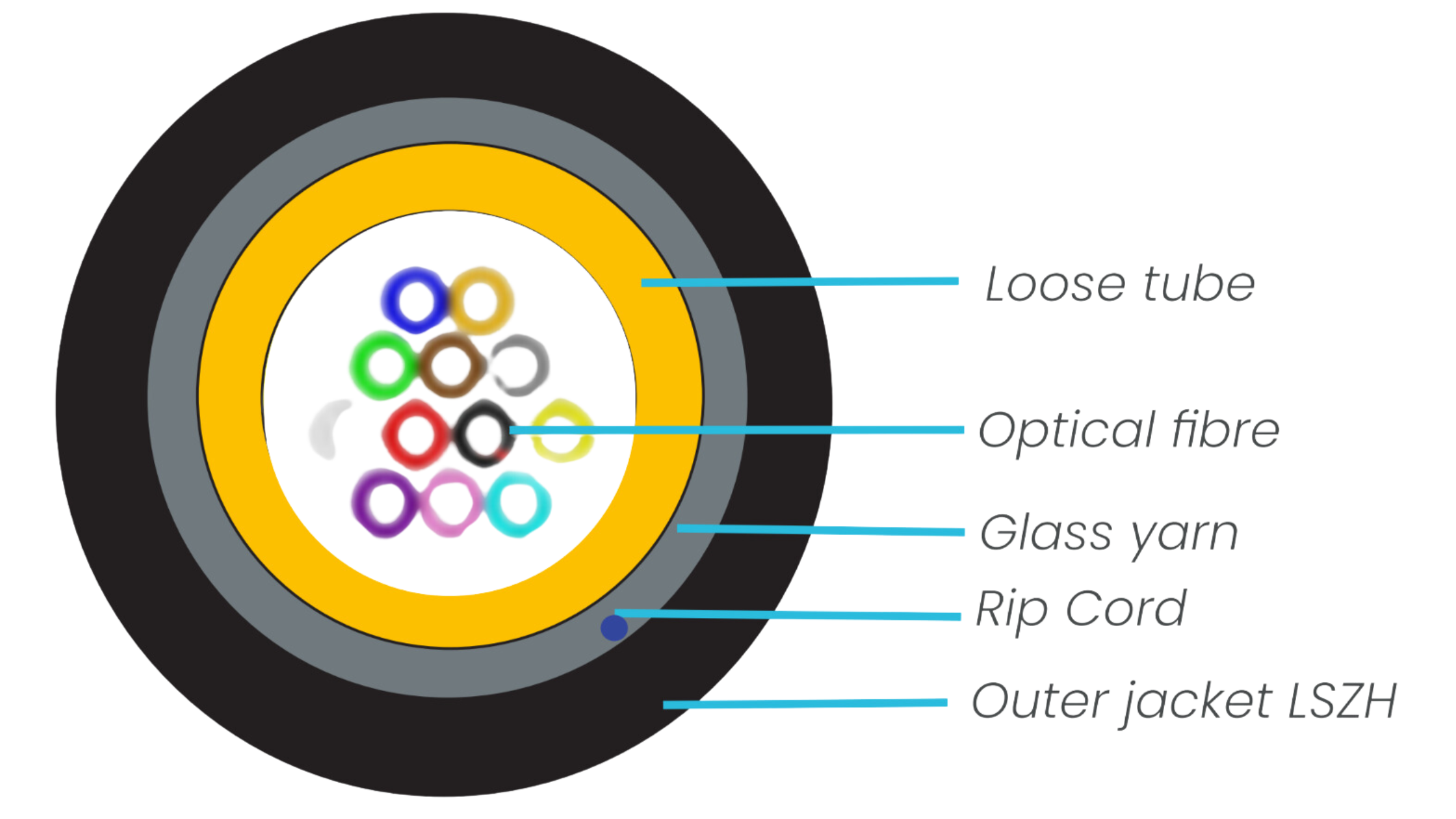Indoor vs. Outdoor Fiber Optic Reels – What’s the Difference and Which One Should You Choose?

Indoor vs. Outdoor Fiber Optics: Which is the Best Choice?
In the world of network infrastructure, fiber optic cabling plays a crucial role in enabling fast, stable, and reliable data connections. However, choosing between indoor and outdoor fiber optic reels can be complex, especially if you’re unsure which is best suited for your application.
At Grayle, a specialist in high-quality fiber optic solutions, we understand how important it is to make the right decision.
In this comprehensive guide, we explain the key differences between indoor and outdoor fiber optic cables, discuss the advantages and disadvantages of each option, and help you determine which cable is the best fit for your network installation.
What Are Fiber Optic Reels?
Fiber optic reels are spools containing fiber optic cables designed for fast and efficient data transmission over short and long distances. Unlike copper cables, fiber optics use light signals instead of electrical signals, which results in:
▪️Minimal signal loss
▪️Higher speeds
▪️No electromagnetic interference (EMI)
At Grayle, we offer a wide range of fiber optic reels suitable for both indoor and outdoor use. We also provide custom-cut fiber cables, allowing you to order the exact length you need—minimizing waste and optimizing installation.


Key Differences Between Indoor and Outdoor Fiber Optic Reels
While both indoor and outdoor fiber optic cables serve the same purpose—transmitting data quickly and efficiently—there are several crucial differences that determine which one to choose. Below are the four main factors that differentiate indoor and outdoor fiber optics:
1. Material and Protection
◽Indoor Fiber Optic Reels:
▪️Comes with an LSZH (Low Smoke Zero Halogen) or PVC jacket.
▪️Designed for indoor environments, such as offices and data centers.
▪️LSZH jackets prevent harmful emissions in case of fire, making them safer for use in public buildings.
▪️Not resistant to moisture, UV radiation, or extreme temperatures.
◽Outdoor Fiber Optic Reels:
▪️Features an HDPE (High-Density Polyethylene) jacket or additional armoring.
▪️Designed to withstand moisture, rain, UV radiation, and extreme temperatures (-40°C to +70°C).
▪️Can be directly buried underground or installed in conduits.
▪️Provides extra mechanical protection against external threats, such as rodents and physical damage.
2. Weather Resistance and Durability
◽Indoor Fiber Optics: Suitable for controlled environments such as office buildings, hospitals, and data centers, where exposure to harsh environmental factors is limited.
◽Outdoor Fiber Optics: Built to endure harsh weather conditions, mechanical stress, and corrosion, making them essential for long-distance applications in open areas
3. Flexibility and Ease of Installation
◽Indoor fiber optic cables are generally more flexible and lightweight, making them easier to install in cable trays, ceilings, and walls without additional protection.
◽Outdoor fiber optic cables tend to be more rigid due to protective layers but are engineered to withstand tough installation conditions, such as underground placement or pole mounting.
4. Use Cases
|
Feature |
Indoor Fiber Optics |
Outdoor Fiber Optics |
|
Jacket Type |
LSZH / PVC |
HDPE / Armored |
|
Weather Resistant? |
❌ No |
✅ Yes |
|
UV Protection? |
❌ No |
✅ Yes |
|
Flexibility |
✅ High |
Limited |
|
Best for... |
Office networks, data centers, hospitals |
Outdoor installations, underground networks, pole-mounted connections |
Which Fiber Optic Cable Should You Choose?
The choice between indoor and outdoor fiber optic cables depends on your specific network needs:
▪️For indoor installations in data centers or office buildings → Choose an Indoor Fiber Optic Cable with an LSZH jacket for fire safety.
▪️For outdoor installations exposed to moisture, UV radiation, and mechanical stress → Choose an Outdoor Fiber Optic Cable with an HDPE jacket.
▪️For underground applications → Choose an outdoor fiber optic cable with extra armoring to protect against rodents and mechanical stress.
At Grayle, we offer a wide range of fiber optic reels, including OM3 and OM4 multimode cables and OS2 singlemode cables, suitable for any application. We also provide custom-cut lengths, ensuring you get exactly what you need without waste.
Conclusion
Choosing between an indoor and outdoor fiber optic reel is crucial for ensuring the performance and durability of your network infrastructure.
Grayle offers a wide range of premium fiber optic solutions that meet the highest quality standards.
Want personalized advice or a custom quote? Contact Grayle today and find the best solution for your network!
Frequently Asked Questions (FAQ)
1. Can I use an indoor fiber optic cable outside?
No, indoor cables lack protective jackets against moisture and UV radiation, making them unsuitable for outdoor use.
2. What protection does an outdoor fiber optic cable have?
Outdoor fiber optic cables feature an HDPE jacket and may include additional armoring for mechanical protection.
3. What are the advantages of an LSZH jacket in indoor cables?
LSZH cables produce less smoke and no toxic fumes in case of fire, making them safer for indoor installations.
4. Can an outdoor cable be installed underground?
Yes, some outdoor fiber optic cables are suitable for direct burial or installation in a conduit.
5. What do OM3, OM4, and OS2 mean?
▪️OM3 and OM4 are multimode cables for short to medium distances.
▪️OS2 is a singlemode cable for long-distance applications.
6. Are outdoor fiber optic cables resistant to rodents?
Some models include additional armoring to provide protection against rodents and pulling stress.
7. How fast can Grayle deliver fiber optic cables?
We aim to ship custom-cut fiber optic cables within 1-2 business days!
Need Fiber Optic Cables That Fit Your Project Perfectly?
Are you ready to optimize your network with reliable, high-speed, and future-proof fiber optic cabling?
Want personalized advice or a custom quote? Contact us today and explore the possibilities!
